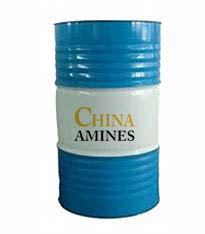1. Chemical Structure and Properties
General Formula: RCOOCH₂CH₂CH₃ (where R = alkyl, aryl, or other organic groups)
A carboxylic acid ester formed by the reaction of a carboxylic acid (RCOOH) with propanol (1-propanol or 2-propanol).
Physical Properties:
Appearance: Typically colorless liquids with fruity or floral odors (varies by R-group).
Boiling Point: Ranges widely (e.g., propyl acetate: 101–102°C; propyl butyrate: 143°C).
Density: ~0.85–0.90 g/cm³ (for short-chain esters); increases with longer R-groups.
Solubility: Generally miscible with organic solvents (alcohols, ethers); low water solubility (<1% for most esters).
Chemical Properties:
Hydrolysis: Undergoes acid- or base-catalyzed hydrolysis to regenerate the parent acid and propanol.
Flammability: Combustible (flash points range from 10°C to 60°C depending on R-group).
Volatility: Higher volatility for esters with smaller R-groups (e.g., propyl formate).
2. Industrial Applications
Solvents:
Coatings & Inks: Short-chain propyl esters (e.g., propyl acetate) are used as fast-evaporating solvents in paints, adhesives, and printing inks.
Cleaning Agents: Effective degreasers for metals and electronics due to low residue formation.
Flavor & Fragrance:
Food Additives: Esters like propyl butyrate (pineapple flavor) and propyl hexanoate (apple flavor) are used in food flavorings.
Perfumes: Long-chain esters (e.g., propyl benzoate) act as fixatives in perfumes.
Pharmaceuticals:
Drug Delivery: Propyl esters of fatty acids (e.g., propyl gallate) serve as antioxidants or prodrugs.
Plasticizers:
Polymer Modification: High-molecular-weight propyl esters (e.g., propyl oleate) improve flexibility in PVC and rubber.
3. Safety and Toxicology
Health Hazards:
Acute Exposure:
Inhalation: Short-chain esters (e.g., propyl acetate) may cause dizziness or respiratory irritation (TLV-TWA: 50–200 ppm).
Skin Contact: Mild irritation; defatting action possible with prolonged exposure.
Ingestion: Low acute toxicity (oral LD₅₀ for propyl acetate: ~9,000 mg/kg in rats).
Chronic Effects:
Neurotoxicity: Limited evidence; some esters (e.g., propyl formate) may affect the CNS at high doses.
Carcinogenicity: Most propyl esters are not classified, though some (e.g., propyl gallate) have debated safety profiles.
Decomposition Risks:
Thermal breakdown (>200°C) releases toxic gases (e.g., CO, aldehydes).
Protection Measures:
PPE: Gloves, goggles, and ventilation for volatile esters.
Storage: Fireproof containers for flammable variants (e.g., propyl formate).
4. Environmental and Regulatory Compliance
Environmental Impact:
Biodegradability: Short-chain esters degrade rapidly (OECD 301F: >70% in 28 days); long-chain esters are slower.
Aquatic Toxicity: LC₅₀ (fish) typically >100 mg/L; low bioaccumulation (log Kow: 1.5–4.0).
VOC Emissions: Short-chain esters classified as VOCs; regulated in coatings and adhesives.
Regulatory Frameworks:
EU: REACH Registration required for commercial volumes; flavor esters approved under EC 1334/2008.
CLP: Flammable esters (e.g., propyl formate) classified as Flam. Liq. 3.
USA: EPA VOC limits under Clean Air Act; GRAS status for food-grade esters (21 CFR 172.515).
China: GB 13690-2009: Classified based on flammability and toxicity (e.g., propyl acetate as Hazard Class 3.2).
5. Case Studies and Application Insights
Case 1: Green Solvent in Automotive Coatings (Sherwin-Williams, 2023):
Challenge: Replace toluene with a low-VOC solvent.
Solution: Propyl acetate blended with bio-based esters achieved 30% lower VOC emissions.
Result: Complied with EU VOC Directive 2004/42/EC while maintaining drying efficiency.
Case 2: Flavor Enhancement in Plant-Based Meat (Beyond Meat, 2022):
Process: Propyl hexanoate mimicked "grilled beef" aroma in pea-protein patties.
Market Impact: 20% increase in consumer preference vs. competitors.
Comparative Analysis:
Propyl Acetate vs. Ethyl Acetate:
Pros: Higher boiling point (101°C vs. 77°C) allows slower evaporation for better film formation.
Cons: Higher cost and lower solvency for polar resins.
Specifications:
Propyl Ester is a high-purity, fast-evaporating solvent with excellent compatibility and stability, widely used in coatings, inks, and chemical formulations, available from China Amines Co at competitive wholesale prices.


